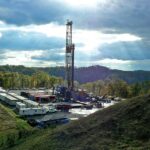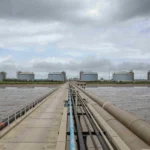Energy News Beat
The trend towards high-frequency sensor data is increasing, but investment decisions require a truly rigorous approach, writes Christian Rae Holm, the CEO of Coach Solutions.
Data continues to represent value in the pursuit of vessel energy efficiency, and as the value of actionable information increases, the focus is increasingly on using high-frequency sensors to drive decision-making.
As always in shipping, the truth is not quite so simple. The welter of information that high frequency sensors can provide creates an opportunity for applications that can work at this cadence. For the majority of the fleet, however, the emphasis is still on the ability to capture high-quality, low-frequency data and blend the two into a robust combination.
Low-frequency data is not just for simple analysis tasks. Used in conjunction with complex digital vessel models, it can provide high-quality insights that reflect the specifics of the ship being analysed.
This core data can be combined with a sensor feed to generate deeper insights and deliver a smaller margin for error and a larger zone of confidence.
The cases where high frequency data will be used by itself in voyage optimisation are few. High frequency data can increase the resolution of low frequency data and remove the suspicion of manipulation. In practice, however, data from the ship is less likely to drive more efficient route optimisation than, say, a really good weather forecast.
Data gathered from the ship comes into play in informing the model of the ship’s fuel consumption. This will help the operator understand that the speed and consumption calculation is close to the actual and where savings can be achieved.
The investment case
Part of the challenge lies in being able to benchmark a fleet that has been assembled over a period of time from new and second-hand sources. Even ships delivered as ‘sisters’ can sail differently, and the performance of previously-loved tonnage can be hard to predict.
Making a start in collecting performance data across a disparate fleet is a daunting prospect, requiring fleet managers to establish baselines from fragmented, sometimes chaotic data sets.
Making once-in-a-lifecycle investment in retrofit energy efficiency technology is too big a project to base the business case on fuel consumption modelling alone. It will require a full-scale verification process and ideally a pilot, which can be used to verify the potential savings.
Methodologies and joint industry projects designed to establish performance claims are emerging, but it can be hard to obtain any kind of standardised data on the efficiency of energy saving devices such as wind assistance or air lubrication.
This is due to the complexity of the systems, the effectiveness of the installation, and the actual conditions the vessel will subsequently encounter.
When considering installation of fuel-saving devices, the need to ‘prove’ the anticipated savings requires measurements that have a smaller degree of uncertainty than the potential targeted savings.
Since many vendors claim a spread of three to five per cent potential fuel savings, a higher level of accuracy is needed to achieve modelling for any claim approaching the upper band. We cannot rely on low frequency data alone in these cases, but need to combine the results with high frequency data to prevent the savings being lost in the inaccuracy band.
But high frequency data on its own is not enough, unless the aim is only to establish hull performance. The ‘global’ picture requires analysis of emissions and voyage data for the voyage management system, so a combination with low-frequency data is required.
To make savings that can actually reduce fuel consumption in a demonstrable way requires a baseline of reliable, low-frequency data, ideally with a layer of high-speed sensor data to provide additional context.
Combining the two can reduce the level of uncertainty and increase the reliability of results for an investment case, but this is an analysis the owner needs to have in place before the installation decision is taken – and afterwards for verification purposes.
Long or short?
The ability to handle both high and low frequency data is what will set a long-term partner apart from a short-term provider in the vessel performance space. The need for high-quality results still applies, and that goes for the choice of vendor as much as the types of data you are collecting.
Since we founded Coach, we have consistently shown that low-frequency data can return high quality results, but the next frontier is clearly combining this with high frequency inputs, such as that provided by our parent Kongsberg.
Despite the attention focused on improving energy efficiency, gathering the data required to perform the necessary analysis is something most companies do not have the resources to do by themselves.
But vessel owners and managers – not to mention solutions vendors – can take steps to validate claims of fuel saving and power reduction and move the industry forward together. All they need is access to expertise in data of all frequencies and an open mind.
The post Thinking fast and slow: why high-quality data demands the right foundations appeared first on Energy News Beat.









